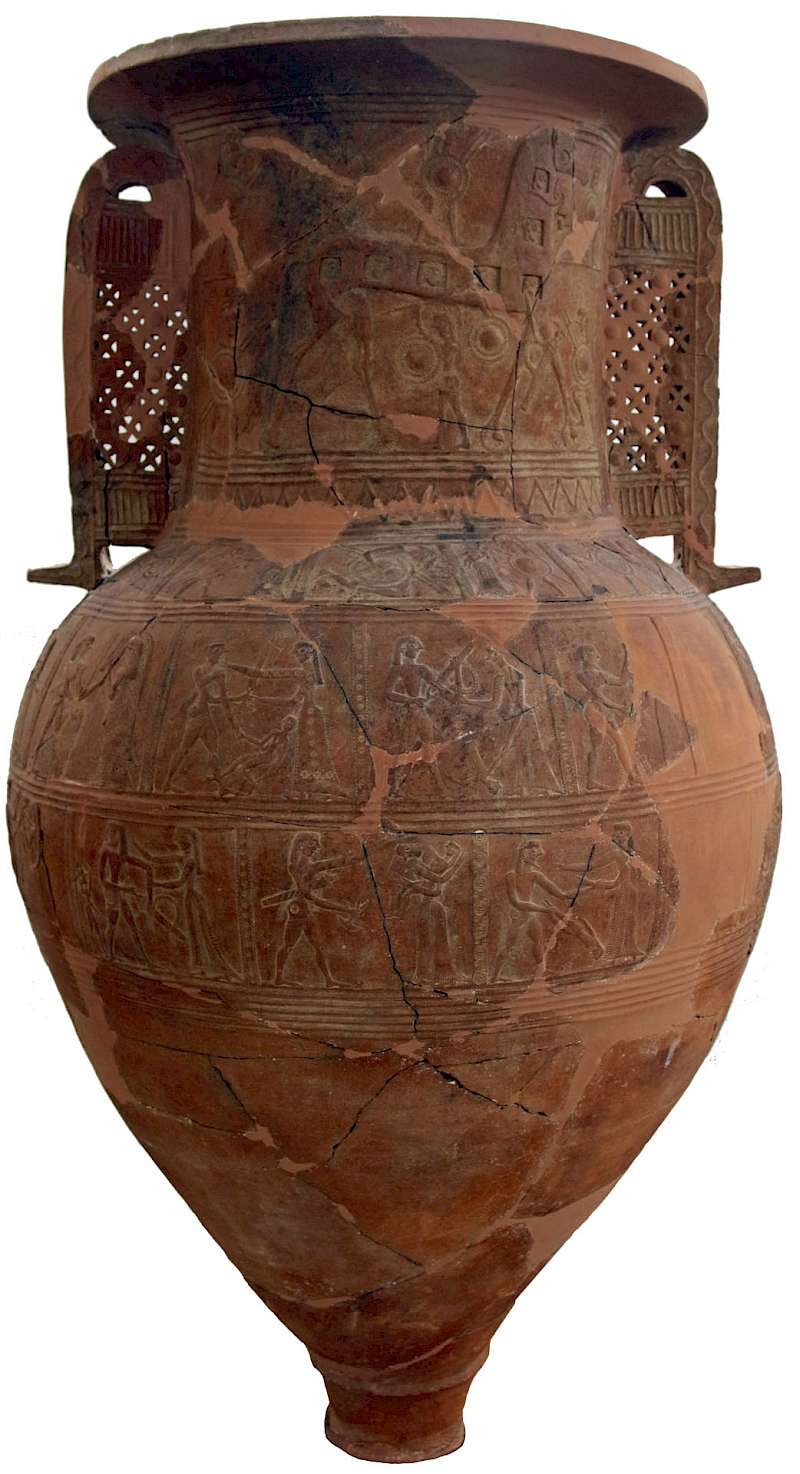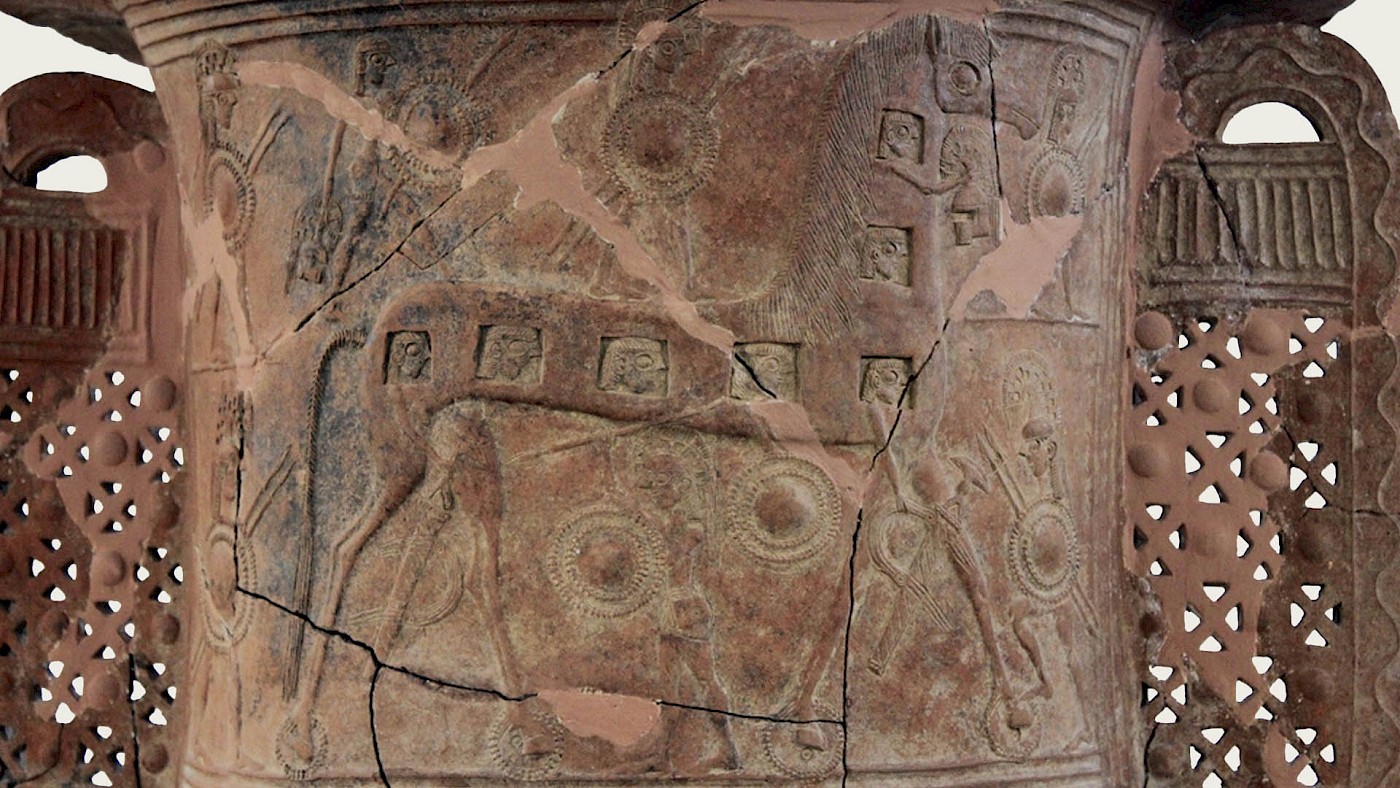When I think about the story of the Trojan War, one of the images that springs instantly to mind is that of the large wooden horse that the Greeks used to capture the city. But when you examine the ancient sources, references to and depictions of the horse are rare.
The horse naturally doesn’t appear in Homer’s Iliad, since the story in that poem predates the actual fall of Troy. In the Odyssey, there’s a brief mention of the horse. In book 4, Menelaus tells Telemachus, Odysseus’ son, of how Helen had walked around the horse, imitating the voices of the wives of the heroes inside. All of them, including Menelaus himself, had been tempted to leap out from the “hollow ambush”, but Odysseus had prevented them from revealing themselves.
Other poems in the Epic Cycle, now lost save for a few scattered fragments and summaries in later sources, apparently devoted more space to the wooden horse. The Little Iliad, attributed to Lesches and consisting of four books, covered events after the death of Achilles, including the building of the horse. The Iliupersis, which consists of just two books and was perhaps composed by Arctinus, dealt with the destruction of Troy at the hands of the Greeks and featured the wooden horse. These poems were probably used as a source of reference by the Roman poet Virgil when he wrote the Aeneid; the horse is featured in the second book of his epic poem.
The Mykonos Vase
When it comes to art, depictions of the woorden horse are uncommon. One of the most impressive pieces of art is a large relief pithos or storage vessel from the island of Mykonos. It was unearthed in 1961. The pithos was accidentally broken during excavation, but has since been restored. It is 1.34m tall and had been used as a burial pithos, containing human bones. Nearby, excavators also found a krater of Late Geometric style. The pithos most probably dates to around 675 BC.

Similar to other relief pithoi of this type, the object is decorated only on the front of the body and the neck; the lower third of the pithos is left blank on both sides. The reason for this is that storage vessels like this were usually partially buried into the ground (for stability and to keep the contents cool), and they often lined a wall. As such, it would have been useless to add decoration to parts of the pot that would have remained invisible.
The scene on neck, also used as the featured image for this article, features the wooden horse. It’s shown as a gigantic statue, with wheels fitted to the feet. Small windows or portholes reveal the faces of warriors inside, while others are depicted around the horse; one warrior is even shown standing on the horse’s back. The warriors are all equipped with gear typical for the period: round, presumably “Argive” shields, as well as helmets and spears. They are also equipped with swords that can almost certainly be identified as “Naue II” type blades, which were common in Greece during this period.
The body features three registers or panels, each with a number of metopes featuring scenes that all appear to relate to the fall of Troy, with an emphasis on the defeated suffering at the hands of the vanquishers. The second metope in the second register features a veiled woman who is probably meant to be Helen.
A common interpretation is that all of these scenes are based on the Iliupersis or, at least, on the same stories that the lost epic poem was originally based on, too. Many of the metopes depict scenes that can be easily recognized, including the scene in which Hector and Andromache’s infant son, Astyanax, is seized by the ankle and about to be killed.
Protecting the city
The Mykonos Vase is a valuable early work of art that with certainty depicts an episode of the ancient story of the Trojan War. One of the most interesting interpretations of the vase is offered by Susanne Ebbinghaus in her article “Protector of the city, or the art of storage in Early Greece”, published in 2005 in the Journal of Hellenic Studies.
Ebbinghaus argues that relief pithoi like the Mykonos Vase were a form of “conspicuous storage”. She sees the Mykonos vase as having offered a kind of guide to how aristocrats in the seventh century BC should behave. Because of their wealth, power, and status, the members of a community’s elite were obliged to protect the city from harm.
If these leaders failed to defend their city, the Mykonos Vase, in a manner completely consistent with ancient Greek epics such as the Iliad, gives an idea of what would happen: men would be killed, including male children, while the women and girls would, for the most part, be raped and enslaved. Already in antiquity, war was hell.
Further reading
- S. Ebbinghaus, “Protector of the city, or the art of storage in Early Greece”, Journal of Hellenic Studies 125 (2005), pp. 51-72.
- M. Ervin, “A relief pithos from Mykonos”, Archaiologikon Deltion 18 (1963), pp. 37-75.
